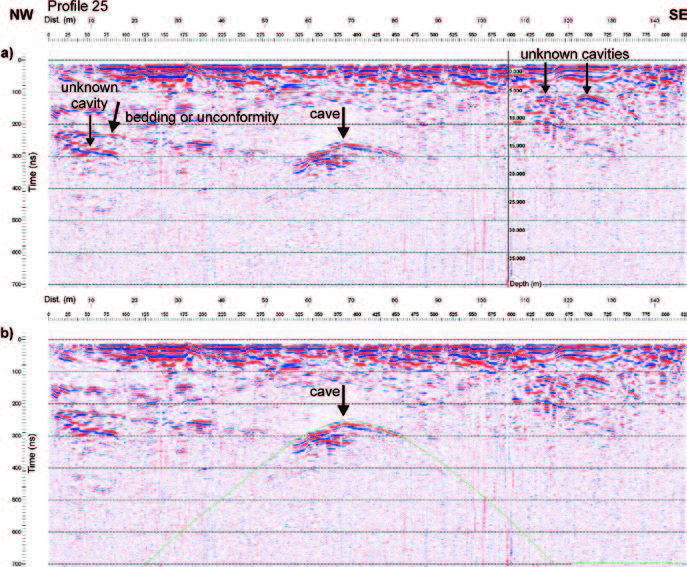Analysis of the capabilities of low frequency ground penetrating radar for cavities detection in rough terrain conditions: The case of Divača cave, Slovenia
DOI:
https://doi.org/10.3986/ac.v41i1.49Keywords:
ground penetrating radar, cavity detection, spatial resolution, limestone, Divača caveAbstract
High frequency ground penetrating radar (GPR) is usually applied for cavities detection in a shallow subsurface of karst areas to prevent geotechnical hazards. For specific projects, such as tunnel construction, it is important to detect also larger voids at medium depth range. However, dimensions of classical rigid low frequency antennas seriously limit their applicability in a rough terrain with dense vegetation commonly encountered in a karst. In this study recently developed 50 MHz antennas designed in a tube form were tested to detect cave gallery at the depth between 12 m and 60 m. The Divaca cave was selected because of a wide range of depths under the surface, possibility of unknown galleries in the vicinity and a rough terrain surface typical for Slovenian karst. Seven GPR profiles were measured across the main gallery of the cave and additional four profiles NE of the cave entrance where no galleries are known. Different acquisition and processing parameters were analysed together with the data resolution issues. The main gallery of the cave was clearly imaged in the part where the roof of the gallery is located at the depth from 10 m to 30 m. The width of the open space is mainly around 10 m. Applied system was not able to detect the gallery in the part where it is located deeper than 40 m, but several shallower cavities were discovered which were unknown before. The most important result is that the profiles acquired NE of the cave entrance revealed very clearly the existence of an unknown gallery which is located at the depth between 15 m and 22 m and represents the continuation of the Divaca cave. Access to this gallery is blocked by the sediment fill in the entrance shaft of the cave. The results of the study are important also for future infrastructure projects which will involve construction of tunnels through karstified limestone and for speleological investigations to direct the research efforts.
Keywords: ground penetrating radar, cavity detection, spatial resolution, limestone, Divača cave.
Downloads

Downloads
Published
How to Cite
Issue
Section
License
Authors guarantee that the work is their own original creation and does not infringe any statutory or common-law copyright or any proprietary right of any third party. In case of claims by third parties, authors commit their self to defend the interests of the publisher, and shall cover any potential costs.
More in: Submission chapter




